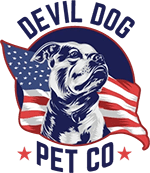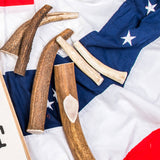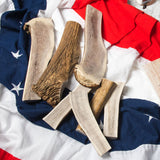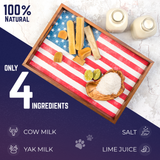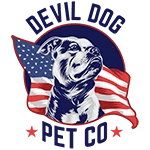Key Takeaways
- The bull terrier original breed was developed in 19th-century England for bloodsport purposes.
- Breeders crossed English Bulldogs with various terriers to create a strong fighting dog.
- Early bull terriers looked very different from today's show dogs, featuring stockier builds and broader heads.
- The original breed prioritized gripping power over elegance in appearance.
Table of Contents
- What Was the "Original" Bull Terrier?
- Birth of a Breed, James Hinks and the Bull Terrier Transformation
- Anatomy of Icon, Distinctive Physical Traits of the Original Bull Terrier
- Temperament Through Time, How Early Bull Terriers Behaved
- From Fighting Pits to Family Members, The Bull Terrier's Changing Roles
- Bull Terrier Health & Grooming, Actionable Owner's Guide
- Choosing a Breeder or Rescue, Preserving the Legacy
- Bull Terriers in History, Culture, and Media
Bull Terrier Original Breed, Roots, Reality, and Responsible Ownership
The bull terrier original breed emerged from 19th-century England's brutal bloodsport arenas, where breeders crossed English Bulldogs with various terriers to create the ultimate "bull and terrier" fighting machine. These early dogs bore little resemblance to today's distinctive egg-headed show dogs, they were stockier, had pronounced stops, and came in various colors with broader heads built for gripping power, not elegance.
Understanding what bull terriers were bred for matters because today's owners inherit both the breed's remarkable loyalty and its stubborn, high-drive temperament. Without proper leadership and enrichment, these dogs can channel their working heritage into destructive behaviors that land them in shelters. The key lies in respecting their original purpose while channeling that intensity through structured training, adequate exercise, and durable chews that satisfy their legendary jaw strength.
Natural chews serve dual purposes: mental stimulation and dental health. Elk antler chews match their bite strength while scraping plaque from molars. Himalayan yak chews provide digestible protein and extended gnawing sessions that satisfy their terrier persistence. Bully sticks offer softer chewing for dogs with sensitive teeth or as high-value training rewards.
What Was the "Original" Bull Terrier?
The original bull terrier emerged in early 1800s England as a purpose-built cross between English Bulldogs and various terrier breeds, primarily the now-extinct English White Terrier. These early "bull and terrier" dogs served dual roles: dispatching rats in London's sewers and entertaining crowds in bloodsport pits where they faced bulls, badgers, and other dogs.
Unlike today's refined show dogs, original bull terriers displayed pronounced facial stops, broader skulls, and more varied coat colors. They typically weighed 35-50 pounds with muscular, compact frames designed for tenacity rather than elegance. Their temperament combined the bulldog's grip strength and pain tolerance with the terrier's speed, intelligence, and prey drive.
- 1800-1835: Early bull-and-terrier crosses emerge in Birmingham and London
- 1835: Bull-baiting banned in England, shifting breed focus to ratting and dog fighting
- 1860s: James Hinks begins refining the breed toward the modern type
- 1885: Bull Terrier Club founded, establishing first breed standards
Birth of a Breed, James Hinks and the Bull Terrier Transformation

James Hinks, a Birmingham dog dealer, revolutionized the bull terrier original breed starting in the 1860s by introducing what he called the "White Cavalier." Hinks envisioned a refined gentleman's companion that retained the breed's courage while gaining social respectability through elegant appearance and improved temperament.
Hinks systematically bred his bull-and-terrier foundation stock with English White Terriers for refinement, Dalmatians for pure white coats, and possibly Greyhounds or Pointers for increased agility and the distinctive downward-curving head profile. This genetic cocktail created dogs that were longer in leg, cleaner in outline, and notably less aggressive toward humans than their pit-fighting ancestors.
The transformation proved dramatic. Where early bull terriers displayed broad, blunt heads with pronounced stops, Hinks' dogs developed the signature egg-shaped skull with no discernible stop between forehead and muzzle. Their bodies became more balanced and athletic, trading some of the bulldog's low-slung power for terrier elegance and speed.
By the 1870s, Hinks' "White Cavaliers" dominated dog shows and attracted wealthy patrons who valued their combination of courage and refinement. This shift from working dog to show dog fundamentally altered what English bull terriers were bred for, changing their primary role from functional fighter to fashionable companion.
Anatomy of Icon, Distinctive Physical Traits of the Original Bull Terrier
The bull terrier's signature "egg-shaped" head represents the breed's most distinctive feature, a smooth, convex curve from the top of the skull down to the tip of the nose with no discernible stop or indentation between the eyes. This unique profile, absent in the original bull-and-terrier crosses, became the hallmark of James Hinks' refined breeding program.
Early bull terriers typically stood 20-22 inches tall and weighed 45-60 pounds, with dense bone structure and muscular development that reflected their working heritage. Their bodies displayed perfect balance: neither too long nor too short, with a deep chest, strong hindquarters, and the characteristic "gladiator" stance that conveyed both power and agility.
Hinks initially focused exclusively on pure white coats, believing this color conveyed gentility and distinguished his dogs from the brindle and pied pit fighters. The breed's triangular, deep-set eyes became smaller and more obliquely placed than their ancestors', while the ears remained naturally erect and pointed. The tail, thick at the base and tapering to a point, was carried horizontally rather than over the back.
- Head: Egg-shaped with no stop, Roman-finished nose
- Eyes: Small, triangular, deep-set, dark
- Body: Well-balanced, muscular but not overdone
- Coat: Originally all-white, later expanded to include colors
- Size: Medium, typically 50-70 pounds when mature
Temperament Through Time, How Early Bull Terriers Behaved
Original bull terriers displayed the complex temperament that defined what bull terriers were bred for: controlled aggression toward prey and opponents combined with unwavering loyalty to their handlers. These dogs needed enough courage to face bulls and badgers, but also the intelligence to work independently and the restraint to live safely with their families. Early accounts describe them as bold, determined, and sometimes stubborn, traits that persist in the breed today. Proper leadership and structured outlets for their drive remain essential for a well-adjusted companion.
From Fighting Pits to Family Members, The Bull Terrier's Changing Roles

The bull terrier original breed served multiple working functions that tested every aspect of their physical and mental capabilities. In the blood sport era, they faced bulls, bears, and other dogs in organized combat that demanded split-second timing, pain tolerance, and the ability to maintain focus despite chaos and injury. Between formal matches, these same dogs earned their keep as ratters in London's warehouses and docks, where a single dog might kill dozens of rats in minutes, work that required lightning reflexes and sustained prey drive.
The transition from working dog to companion began with changing British laws and James Hinks's strategic marketing of the "White Cavalier." As blood sports were outlawed in the 1830s, Bull Terrier owners needed new outlets for their dogs' abilities. Dog shows provided a peaceful competition venue, while the breed's natural guarding instincts made them valuable property protectors. Hinks positioned his refined Bull Terriers as both loyal family members and capable guardians, paving the way for their modern role as bold, affectionate companions in homes around the world.
Bull Terrier Health & Grooming, Actionable Owner's Guide
The bull terrier original breed requires consistent grooming and preventive health care to maintain the robust constitution James Hinks intended. Their short, dense coat and muscular build demand specific protocols that honor their working heritage while addressing modern health challenges.
Essential Grooming Protocol
Weekly brushing with a rubber curry comb removes dead hair and stimulates circulation. Bull Terriers shed year-round but intensely during seasonal changes, daily brushing during these periods prevents hair from embedding in furniture. Bathe monthly or when dirty using gentle, sulfate-free shampoos; their sensitive skin reacts poorly to harsh chemicals.
Clean ears weekly with veterinarian-approved solution, checking for redness or odor that signals infection. Trim nails every 2-3 weeks, overgrown nails alter their gait and stress joints. Brush teeth 3-4 times weekly using dog-safe toothpaste; their powerful jaws generate significant plaque buildup.
Diet, Chews, and Dental Care
Bull Terriers thrive on high-quality protein (25-30% minimum) with moderate fat content. Their athletic build requires calories that support muscle maintenance without excess weight, obesity stresses joints and exacerbates breathing issues in flat-faced lines.
Natural chews serve dual purposes: mental stimulation and dental health. Elk antler chews match their bite strength while scraping plaque from molars. Himalayan yak chews provide digestible protein and extended gnawing sessions that satisfy their terrier persistence. Bully sticks offer softer chewing for dogs with sensitive teeth or as high-value training rewards.
For more insight into the benefits and safety of these chews, read our detailed guide on bully sticks for dogs.
Preventive Health Routines
Schedule annual wellness exams with semi-annual visits after age seven. Bull Terriers mask pain well, regular veterinary assessments catch issues before they become emergencies. Monitor for breed-specific concerns: hearing loss (especially in white dogs), skin allergies, and heart murmurs.
Perform weekly home health checks: examine eyes for cloudiness, feel for lumps or swellings, and watch for changes in appetite or energy. Document any abnormalities with photos and dates, patterns help veterinarians diagnose problems faster.
Red Flag Symptoms: Sudden aggression, difficulty breathing, excessive scratching, or loss of balance require immediate veterinary attention. Bull Terriers' stoic nature means visible distress indicates serious problems.
Choosing a Breeder or Rescue, Preserving the Legacy
Selecting the right source for your Bull Terrier determines whether you'll experience the breed's noble qualities or struggle with preventable problems. Responsible breeders and ethical rescues prioritize health, temperament, and long-term support over quick profits.
Spotting a Reputable Bull Terrier Breeder
Legitimate breeders provide health testing documentation for both parents: BAER hearing tests, heart clearances, and genetic screening for hereditary conditions. They ask detailed questions about your experience, lifestyle, and expectations, good breeders want lifetime homes, not quick sales.
Red flags include: multiple litters available simultaneously, unwillingness to meet the mother dog, no health testing records, or pressure to "buy now." Quality breeders often maintain waiting lists and require contracts specifying spay/neuter agreements and return policies.
Bull Terrier Rescue Considerations
Rescue Bull Terriers often arrive with behavioral challenges stemming from inadequate leadership or traumatic experiences. Reputable rescues conduct temperament evaluations, provide medical histories, and offer post-adoption support. Expect a thorough application process, good rescues match dogs carefully to prevent returns.
Most rescue Bull Terriers require experienced handlers who understand the breed's independence and strength. They may need remedial training, socialization work, or ongoing medical care. However, mature rescue dogs often display the breed's loyalty and intelligence without puppy destructiveness, making them excellent companions for prepared owners.
For more information on the breed's temperament and suitability for different households, see our article on dog breeds prone to separation anxiety.
Bull Terriers in History, Culture, and Media

The Bull Terrier's distinctive appearance and bold personality have made them cultural icons, though media representation hasn't always served the breed well. Understanding their public image helps modern owners navigate misconceptions while celebrating their heritage.
Famous Bull Terriers in History
General George S. Patton owned a Bull Terrier named Willie, who accompanied him throughout World War II and provided comfort during the stress of command. President Theodore Roosevelt kept several Bull Terriers at the White House, appreciating their courage and loyalty. These associations with strong leaders reinforced the breed's reputation for devotion and bravery.
In dog showing, Champion Haymarket Faultless dominated early competitions and established the modern breed type. His influence appears in pedigrees worldwide, demonstrating how individual dogs can shape entire breeds when bred thoughtfully.
For a comprehensive overview of the breed's history and development, visit the Bull Terrier Wikipedia page.
Pop Culture's Impact on Breed Perception
Spuds MacKenzie's popularity in 1980s advertising introduced millions to Bull Terriers but also created unrealistic expectations about their temperament and care needs. More recently, films and television have portrayed them as either comedic clowns or aggressive fighters, neither representation reflects the breed's true nature.
These media portrayals contribute to breed-specific legislation challenges and insurance restrictions. Responsible owners combat misconceptions through proper training, socialization, and public behavior that demonstrates the breed's noble qualities rather than stereotypes. For additional reading on the unique qualities of yak chews and their role in canine enrichment, see our post on yak chews.
To explore scientific perspectives on the breed's health and genetics, review this peer-reviewed study on canine genetics.
Frequently Asked Questions
What is the original form and bloodline of the Bull Terrier, and why did it change?
The original Bull Terrier was a 19th-century English cross between English Bulldogs and various terriers, bred for strength and tenacity to excel in bloodsport. Early dogs had stockier builds and broader heads focused on gripping power rather than appearance. Over time, breeders like James Hinks refined the breed’s look toward a more elegant, egg-shaped head and smoother lines to suit show standards and companion roles, shifting away from its fighting roots.
